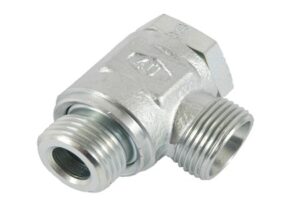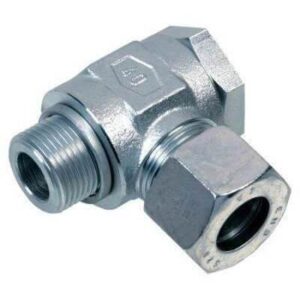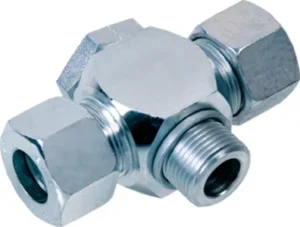Contact : +91-79045 61980 | Email: hydrofitengineers@gmail.com
Hydraulic Banjo Coupling
Banjo coupling are an important component in hydraulic systems. Hydrofit Engineers manufactures banjo fittings which are used to connect hoses or tubes to the system, allowing for the transmission of hydraulic fluid between different components. DIN 2353 is a standard specification for hydraulic banjo couplings that confirms their compatibility, safety, and performance.



Design and Construction
Hydraulic Banjo fittings are comprised of a bolt, banjo body and sealing washer. The bolt is usually of steel or stainless, that to be connected with other parts. The body of the banjo is typically constructed with steel, aluminum or brass materials and contains a hole in the center for fluid to pass. The sealing gasket is installed between the banjo body and the connected part to avoid leakage.
Banjo Fittings/Coupling Design Custom coupling design is of the utmost importance. The various parts of DIN 2353 must follow its dimensions and tolerances for a leak-free connection that also handles the pressure and vibration that occurs within hydraulic systems. For example, the sealing washer should be composed of a material compatible with the fluid that will come into contact with it while also having sufficient strength to withstand pressure or temperature exposure in operation.
You may explore all the other DIN2353 hydraulic fittings like: Equal Elbow, Swivel Elbow, Bulkhead Union and more.
Installation And Assembly
Correct installation and orientation of banjo fittings or couplings is critical for their performance and safety. See DIN 2353 for the tightening torque of the bolts, which covers recommended thread engagement and installation sequence. These instructions are necessary to ensure that your coupling is securely attached and will not leak, or be compromised under pressure.
When you are ready to install your hydraulic banjo fittings, be sure to check each part of the assembly for any signs of damage or wear. All the broken parts need to be replaced before assembling. The banjo body should be set with the hole oriented in line with fluid flow and the sealing washer goes onto the bolt between the banjo body and what you are bolting it to. This bolt is threaded through to the part to which it is being attached and torqued down.
Performance And Safety
Hydraulic banjo fittings need to be able to withstand the high pressures and vibrations that hydraulic systems give off. The DIN 2353 standard defines the pressure rating of banjo couplings according to their material and size, as well as the maximum admissible vibration speed.
The banjo fitting or coupling must also guard against leakage and the safety of the system’s operation. The sealing washer may also be constructed from a material that is capable of withstanding the pressure and temperature of the system and/or is compatible with the fluid being used. The resonator body of the banjo must be strong enough to resist the internal pressure and vibration without distorting and/or cracking.
This standard lays down the requirements for banjo couplings design, construction, fitting and performance in order to achieve compatibility, safety and interchangeability. Correct installation and assembly of banjo couplings is crucial to their operation and safety, as well as ensuring they meet the requirements set out in DIN 2353 type fittings.
